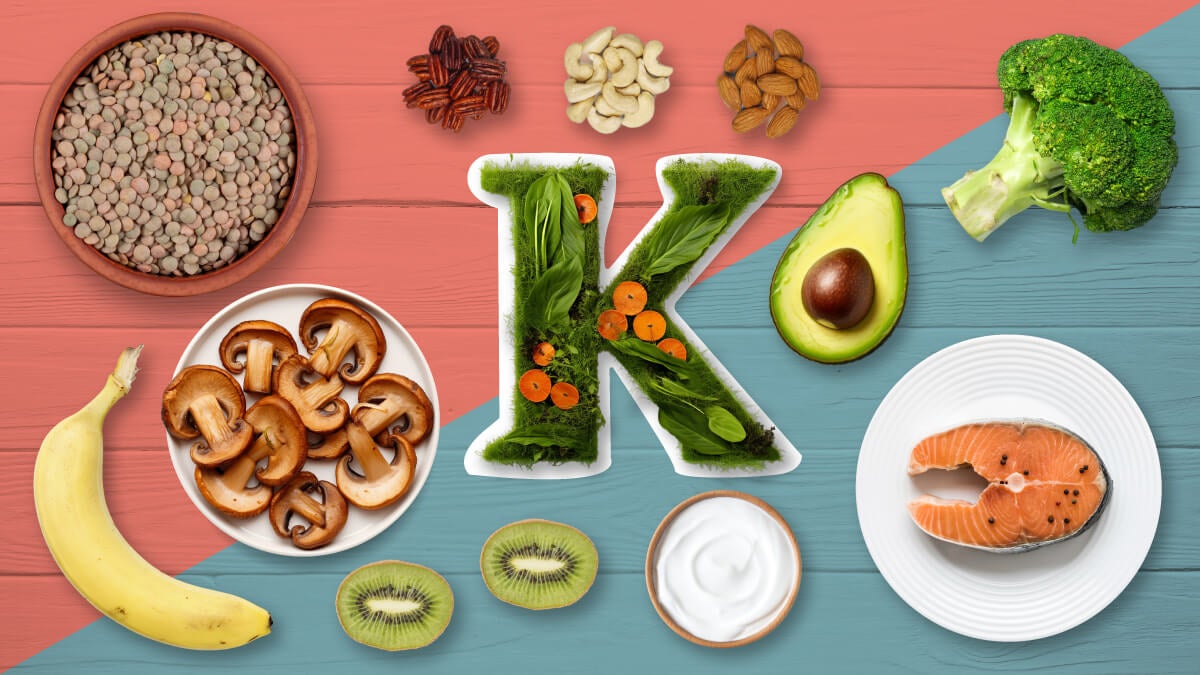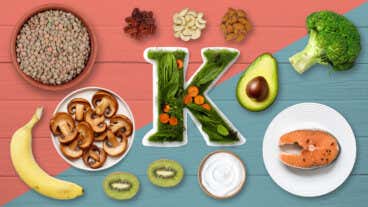Avoid These 45 Foods If You Have High Potassium Levels

7 minutes
Author’s recommendation
Although it is an important mineral for the body, excess of it in the blood is dangerous. If you suffer from hyperkalemia, it is recommended to limit your intake of certain fruits, vegetables, legumes and meats.

Potassium performs important functions in the body. It is involved in muscle contraction, transmission of nerve impulses and regulation of blood pressure. While consuming it is important, if you suffer from certain medical conditions such as hyperkalemia, you may need to avoid or limit foods high in this mineral.
This is usually not an easy task since micronutrients are found in a wide variety of fruits, meats and vegetables. To prevent dietary changes from causing more problems than solutions, must be developed, recommended and supervised by a medical professional. Restricting foods may come with side effects that need to be prevented and counteracted.
What is hyperkalemia and why does it occur?
This is an excess of potassium levels in the blood. For diagnosis, it is necessary to conduct a laboratory test and confirm the presence of more than 5 millimoles per liter (mmol/L) of the trace element.
The normal range is 3.5 to 5 mmol/L.
Mild cases of hyperkalemia may go undetected because they do not always present with obvious symptoms and are only rarely detected by blood tests. However, in more serious circumstances, the following signs may appear:
- Nausea
- Vomit
- Insomnia
- Tremor
- tingling
- Chest pain
- Muscle weakness
- Decreased cardiac activity
Although the causes vary, it is most often associated with kidney disease. When the kidneys do not function properly, potassium is not excreted properly in the urine and accumulates in the blood..
This can occur, among other things, due to conditions such as chronic kidney disease, the use of certain medications (such as diuretics), and conditions that cause rapid cell destruction, such as cancer. This can also occur in cases of adrenal insufficiency and heart failure.
Excessive potassium intake is rare, but if it occurs, it can lead to elevated potassium levels in the blood. Especially if you suffer from a disease that makes it difficult to eliminate.
45 Foods to Avoid or Cut Down If You Have High Potassium Levels
According to the Spanish Heart Foundation, a healthy adult You should consume an average of 3,100 milligrams of potassium per day.. However, if you have chronic kidney disease or proven hyperkalemia, this amount may need to be reduced for medical reasons.
In addition to the recommendations that a nutritionist develops for us, we will need to know which foods are richest in potassium so as not to make mistakes. According to the National Kidney Foundation criteria, a product contains too much of this mineral when contains more than 200 milligrams of nutrients per 100-gram serving.
Let’s see the list in detail. For reference values, data from the US Department of Agriculture was taken, which indicates the number of milligrams of the mineral per 100 grams of the food product mentioned (this is the number we will consider in parentheses).
8 Fruits High in Potassium
If you associate banana with potassium, you’re right. However, this is not the only fruit in this category. There are many of these that you will have to limit if you suffer from hyperkalemia.
- Bananas (749 mg)
- Dates (656 mg)
- Coconut (356 mg)
- Kiwi (312 mg)
- Melon (267 mg)
- Damascus or apricot (259 mg)
- Pomegranate (236 mg)
- Figs (232 mg)
You should also regulate your intake of other fruits, which are closer to 200 milligrams. For example, orange and its derivatives, plum, mango and dehydrated juices.
18 Vegetables and Legumes with Lots of Potassium
Other foods that are sources of potassium include green leafy vegetables and certain vegetables. Leaving them to soak will remove some of the minerals..
- Yam or sweet potato (816 mg)
- Raw spinach (558 mg)
- cabbage (491 mg)
- Avocado (485 mg)
- Raw potatoes without skin (446 mg)
- Boiled Soybeans (443 mg)
- Chard (379 mg)
- Parsnips or white carrots (375 mg)
- Artichoke (370 mg)
- Boiled lentils (369 mg)
- Cooked beans (358 mg)
- Pumpkin (352 mg)
- Legumes (332 mg)
- Tomato sauce (331 mg)
- Beetroot (325 mg)
- Mushrooms (318 mg)
- Broccoli (316 mg)
- Zucchini or zucchini (261mg)
In turn, boiled peas, cabbage and leeks are foods with an average calorie content that can be eaten in moderation. Potatoes contain large amounts of potassium in almost all varieties..
6 Animal Foods That Have Enough Potassium
Beef and chicken provide significant levels when consuming more than 85 grams of product. In addition, the following animal products contain high levels of potassium:
- Salmon
- Sausages
- Sausages
- Edam
- Milk and yogurt
- Processed meats, such as sausage or bacon.
6 nuts for limiting
They can be included in the diet for hyperkalemia, until 30 grams per day is exceeded. The list is as follows:
- Walnuts
- Pistachios
- Hazelnut
- Almond
- Peanut
- sunflower seeds
7 Other Foods You Should Limit If They’re High in Potassium
Drinks can also contain a lot of minerals. In addition, some additives that are not used in large quantities can increase the final nutrient value of our products.
- Came
- Beer
- Salt substitutes
- Peanut butter
- Pickled products
- Sweets such as cocoa and black sugar.
- Spices such as cumin, paprika, curry and dill.
Tips for controlling dietary potassium levels
List of potassium rich foods we have given you This doesn’t mean that all of these foods should disappear from your diet.. Some of this would be impossible and you might create more problems than solutions.
Therefore, choose moderation or limitation based on your preferences and the instructions of a nutritionist. Also, don’t forget that there are culinary techniques that reduce potassium levels:
- Use high temperature cooking, dry heat or roasting.
- Peel fruits and vegetables to avoid contaminating them with potassium contained in the peel.
- Boil vegetables or legumes several times, for which the water must be changed and drained each time you cook.
- Drain canned vegetables and allow them to soak in other water before using. The same goes for canned fruit syrup.
Choose foods low in potassium
If you’re interested in low-potassium foods that you can safely include in your diet, keep in mind that they fall into this category. those that contain less than 150 milligrams of the mineral per 100-gram serving. However, excessive consumption will ultimately lead to an increase in micronutrient contribution.
Therefore, use the following under the supervision and guidance of a nutritionist:
- Fruits: pear, apricot, peeled apple, juice or puree, red fruits (blueberries, blackberries, strawberries and raspberries), grapefruit, pineapple and watermelon.
- Raw vegetables: onions, cauliflower, celery, corn, cucumbers, peppers and lettuce.
- Boiled vegetables: carrots, turnips, eggplants and asparagus.
- Lamb meat, eggs, margarine, mayonnaise.
- White bread, noodles, white rice and honey.
- Tea and coffee.
Dietary restrictions are not the only treatment
One of the first measures to reduce potassium levels in the blood is to limit it in food. And although it may slow the progression of kidney disease, This is not a curative treatment.
The work, published in the official journal of the European Kidney Association, suggests other potential clinical factors beyond diet should be taken into account. In turn, other studies suggest that plant foods may have certain qualities that are beneficial for patients with kidney disease, so eliminating them from the diet is more of a problem than a help.
According to the condition, Your doctor may recommend different approaches for hyperkalemia. Sometimes diuretics are prescribed to increase the excretion of the mineral in the urine. There are also resins, such as polystyrene sulfonate, that bind to nutrients in the digestive tract and excrete them in the stool.
In more severe cases, a combination of insulin and glucose is used intravenously. If kidney disease is very advanced, dialysis will be indicated.
Finally, It is extremely important to consult a medical professional determine the causes of high potassium in the blood. The nutritionist will then develop a diet, but we will have to apply other measures and perhaps even take medications.
